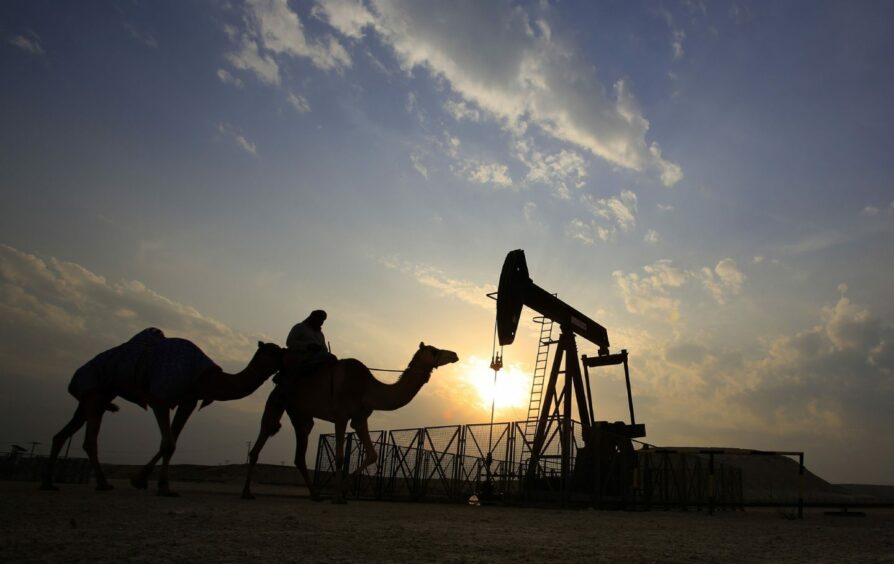
Oil pared gains before an OPEC+ meeting on supply strategy, after earlier stretching an advance that followed the European Union’s announcement Wednesday of a phased ban on Russian imports.
West Texas Intermediate was little changed above $107 a barrel after closing up 5.3% on Wednesday. The EU plans to ban Russian crude over the next six months and refined fuels by the end of the year, to increase pressure on President Vladimir Putin over his invasion of Ukraine. The bloc is also targeting insurers in a move that could dramatically impair Moscow’s ability to ship oil around the world.
OPEC+ will likely ratify another modest production increase when members gather later Thursday, with the threat to demand in China from anti-virus lockdowns offering another reason for caution. Still, there are signs that a lack of capacity is hobbling the group’s ability to deliver even small increases.
Oil has surged more than 40% this year as Russia’s invasion of Ukraine disrupted flows, inflation has picked up and central banks including the U.S. Federal Reserve have started to tighten policy. The dollar was higher on Thursday, adding a headwind to crude, after the Fed hiked interest rates by the most since 2000.
“Oil prices are searching for equilibrium, stuck in a tight range between $100 a barrel and $110 a barrel,” JPMorgan Chase & Co. analysts including Natasha Kaneva said in a note to clients. “Overall, we view a phase-out ban as the right ban.”
Prices
WTI for June delivery was little changed at $107.74 a barrel at 10:24 a.m. in London, after earlier adding as much as 1.1%
Brent for July settlement added 0.2% to $110.33 a barrel.
At present, Russia’s oil exports are running at a record pace as Moscow manages to reroute cargoes previously sent to the U.S. and elsewhere to alternative buyers, especially in Asia, JPMorgan said.
The EU aims to conclude the sanctions package by the end of the week, or May 9 at the latest, according to diplomats. To get the curbs over the line, the bloc needs to address concerns from Hungary and Slovakia on phase-out timing, and queries from Greece on banning transport of oil between third countries.
Oil markets remain in backwardation, a bullish pattern marked by near-term prices trading above longer-dated ones. Among key differentials, the spread between Brent’s two nearest December contracts was above $13 a barrel on Thursday. That’s more than triple the gap at the start of the year.
Callum Macpherson, Investec’s head of commodities, said: “The planned EU oil embargo represents a massive logistical challenge for oil markets. Re-routing Russian output from Europe to willing buyers in Asia, in the presence of sanctions, is already so challenging that even Russia has admitted its production will decline significantly. This problem will likely get worse.
“This leaves EU members competing with other consumers for the remaining available supply. OPEC+ continues to view this as a problem of the West’s own making and not a fundamental supply issue that it should respond to.
“However, the reality is that amongst its members, only Saudi Arabia and UAE have capacity to increase supply significantly. If they were to do so, the ensuing falling out with Russia could bring an end to OPEC+. It is therefore likely that OPEC+ will announce its usual 400 kbl/day increase when it meets today and provide minimal comment.
“This leaves the covid lockdowns in China as the only offset to the tightness in the markets. But how much longer will that last? Brent is testing the down-trend that has constrained rallies since the initial jump when Russia invaded Ukraine and maybe poised to break higher.”
Recommended for you
